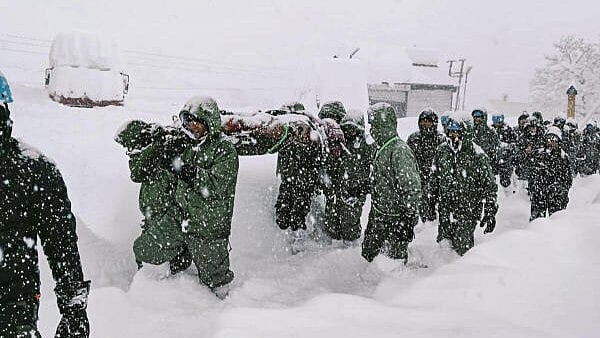
Indian army personnel during a rescue effort following an avalanche that struck a camp near Mana village in Chamol district of Uttarakhand, on Friday.
Credit: PTI Photo
Mana, a hamlet in the upper reaches of the Garhwal region in Uttarakhand’s Chamoli district, is the nearest village to the Border Roads Organisation (BRO) project site where 55 labourers were trapped under an avalanche on Friday. So far, 44 of the 55 workers had been rescued while one person succumbed to his injuries.
With a population of around 1,200, Mana is located at an altitude of 10,500 feet, just 55 km from the India-China border, and is often referred to as the "first Indian village".
When the avalanche struck on Friday morning, devastating everything in its path, no casualties were reported in Mana. This was because the entire village had been deserted as residents migrate to Gopeshwar, Jyotirmath, and Jhinkwan in Chamoli district during the winter months. However, the most popular destination is Gopeshwar, the district headquarters, around 100 km away.
Since the avalanche, the villagers have been counting their blessings, feeling fortunate that they were away when the disaster struck.
Every year, between November and April, the villagers of Mana migrate to lower altitudes to avoid the harsh winter conditions, with temperatures often dropping to minus 17 degrees Celsius or lower.
During their five-month stay in Gopeshwar, many of them make handicraft items to support their livelihood. This annual migration is partly driven by the need for work and partly by a long-standing tradition passed down through generations, as reported by TOI.
The villagers return to Mana when the weather improves and the Char Dham Yatra commences, selling woolen items to the pilgrims visiting the Badrinath shrine.
"We are fortunate we had shifted to lower locations; otherwise, many people could have been trapped," Pitambhar Molpha, the village headman, was quoted as saying by TOI.
